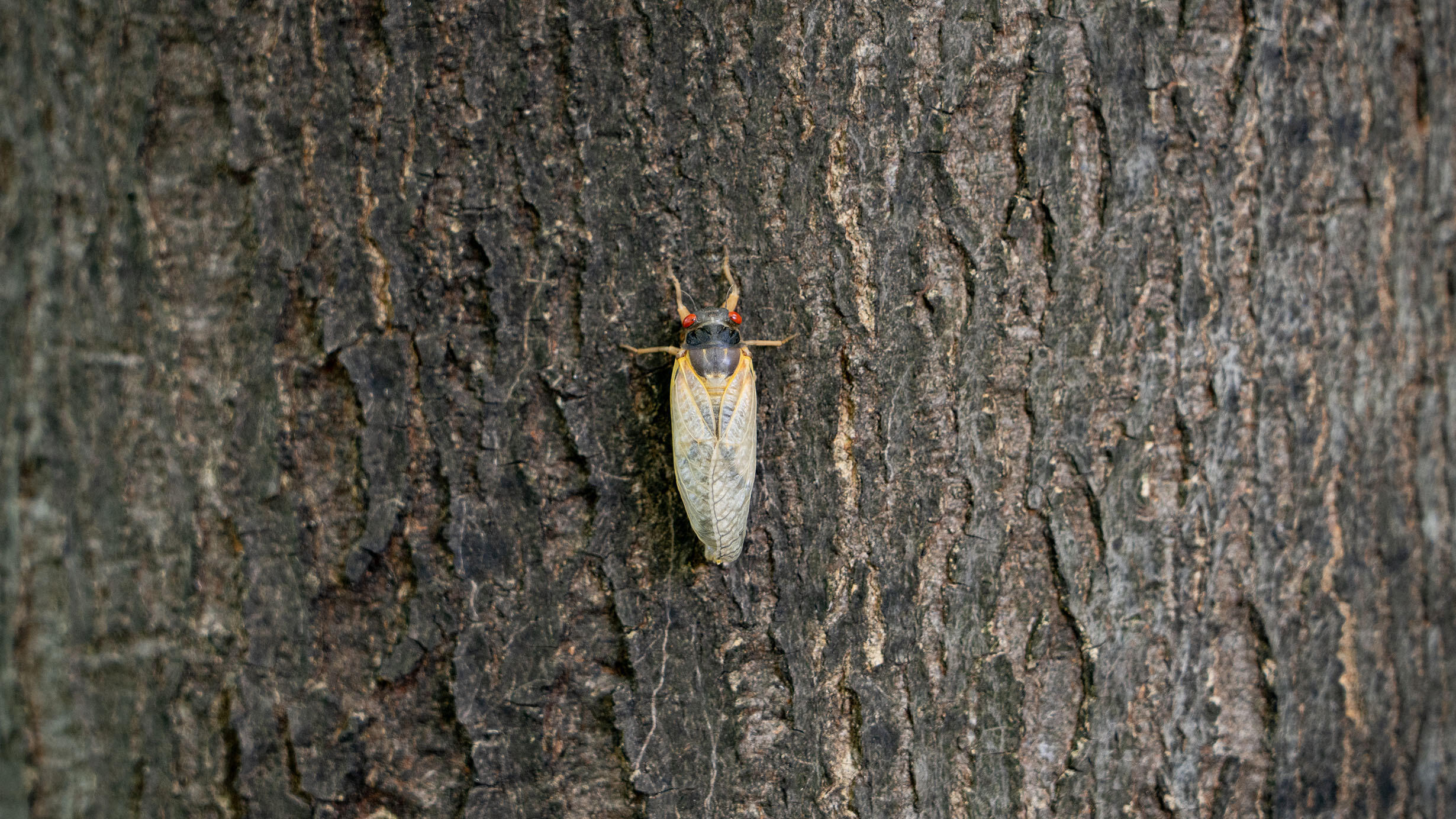 Brood X cicada photographed in 2021 in Washington, D.C.
Brood X cicada photographed in 2021 in Washington, D.C.Architect of the Capitol
New research puts forth a surprising tool for tracking the emergence of periodical cicadas: fiber optic cables.
In addition to transmitting high-speed internet to households, fiber optic cable can be used as a sensor to detect temperature changes, vibrations, and even very loud sounds—including emergency vehicles, car alarms, and, as described today in the Journal of Insect Science, the raucous mating calls of cicadas.
Led by scientists at NEC Labs America and the Museum, the proof-of-concept study focused on periodical cicadas—the insects known for emerging by the billions on 13- or 17-year cycles. Although there are multiple ways scientists monitor cicada emergence—including radar, sound recordings, and citizen-scientist-collected data—there isn’t yet an efficient way to record cicada activity over large areas for a long amount of time.
“We’re currently in a period of unprecedented insect decline and changing habitat,” said study co-author Jessica Ware, an associate curator and chair of the Museum’s Division of Invertebrate Zoology. “It’s vital that we establish baseline data for species impacted by climate change, and that includes cicadas, which experience a slightly different world with every emergence.”
The researchers used a technology called distributed fiber optic sensing. When a pulse of light is sent through a fiber cable, tiny disturbances—including loud sounds—cause a small fraction of the signal to bounce back to the source. Analyzing this backscatter can reveal the volume and frequency of the sound.
In June 2021, the scientists tested the ability of this technique to detect the chatter of Brood X, the largest of several populations of cicadas that emerge on 17-year cycles, on fiber optic cable strung on utility poles on the grounds of NEC's lab in Princeton, New Jersey. The cicadas' buzzing showed up at 1.33 kilohertz, which matched the frequency of the cicadas’ call measured with a traditional audio sensor placed in same location.
The test also revealed the cicadas’ peak frequency, which changed with the temperature in the area, as well as the overall buzzing intensity, which decreased over the 15-day test period as the cicadas reached the end of their life cycle.
“I was surprised and excited to learn how much information about the calls was gathered, despite it being located near a busy section of Middlesex County in New Jersey,” Ware said.
The researchers found that a single sensor can be used on a 50-kilometer (31-mile) cable and can detect the location of the disturbance to within 1 meter (3 feet). To achieve a similar level of monitoring with acoustic sensors, the project would require 50,000 devices and a power supply to run them, the authors say. The growing network of fiber optic infrastructure in the country could be incorporated into entomologists' efforts to observe and measure cicada populations over time.
“Thanks to the booming development of broadband access and telecommunications, fiber cables are ubiquitously available across communities, weaving a vast network that not only provides high-speed internet but also serves as a foundation for the next generation of sensing technologies," said NEC Labs America photonics researcher Sarper Ozharar, the lead author of the study.
The technology also could be used to monitor a variety of other insects.
“Periodical cicadas were a noisy cohort that was picked up by these systems, but it will be interesting to see if annual measurements of insect soundscapes and vibrations could be useful in monitoring insect abundance in an area across seasons and years,” Ware said.